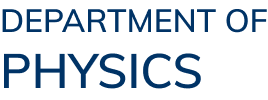Abstract
The response of a photonic structure can be modeled by the collective behavior of arrays of different orbitals within the same lattice. With appropriate material choices and structural optimization, the response of a specific orbital—such as the p-orbital—can dominate, while contributions from other orbitals become negligible in the frequency range of interest. The orbital degree of freedom is therefore essential to understanding exotic phenomena in photonic crystals. In this talk, I will highlight several intriguing effects in photonic structures composed solely of p-orbitals. I begin with a square lattice containing two p-orbitals per site, where the system supports a bound state confined by a finite barrier. I then consider lattices with a single p-orbital per site, introducing the pointing direction of the orbital as an additional degree of freedom. By appropriately rotating the p-orbitals in each unit cell, a set of bands can be made degenerate and flat at specific rotation angles. Furthermore, applying a periodic Moiré-patterned twist to the orbital orientations produces flat bands whose formation does not require discrete “magic angles.” In addition, the frequency and band gaps of the flat bands relative to neighboring bands remain continuously tunable.
References:
1. T. Liu, K. Bai, Y. Zhang, D. Wan, Y. Lai, C.T. Chan, and M. Xiao, “The suppression of finite size effect within a few lattice sites” New J. Phys. 26, 023035 (2024).
2. T. Liu, K. Bai, Y. Zhang, D. Wan, Y. Lai, C.T. Chan, and M. Xiao, “Finite barrier bound state”, Light Sci. App. 13, 69 (2024).
3. H. Xia, Z. Wang, Y. Wang, Zhen Gao, M. Xiao, “Observation of fully flat bands in a photonic dipolar kagome lattice”, submitted.
4. Y. Wang, M. Xiao, “Emergence of ultraflat bands from twisted p-orbitals”, in preparation.
Dr. Meng Xiao received his BSc from Wuhan University in 2010 and his Ph.D. from the Hong Kong University of Science and Technology (HKUST) in 2014. He subsequently worked as a postdoctoral fellow with Prof. C. T. Chan at HKUST and Prof. Shanhui Fan at Stanford University. In 2018, he joined the School of Physics and Technology at Wuhan University, where he is now a professor. His research focuses on novel topology-related phenomena in classical waves (including electromagnetic and acoustic waves), non-Hermitian and nonlinear systems, and synthetic dimensions.
